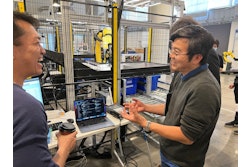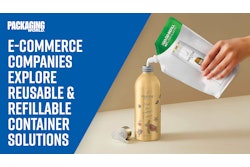In the U.S., supply chain disruptions caused by COVID-19 have eased, leaving in their wake memories of understocked retail shelves and extended delivery schedules. Evidencing the transoceanic component was the broadcasted spectacle of flotillas of container ships, anchored in coastal waters, awaiting days-delayed permission to come into port.
Companies that engage in transoceanic commerce should strategize to reduce their vulnerability to supply chain disruptions, whether caused by pandemics, natural disasters, geo-political upheavals, or other factors. Whereas such strategizing encompasses a multitude of factors, it needs to reflect that a major percentage of containerized cargo consists of packaged, unitized goods.
Containerization does not change the fundamentals of the physical aspects of the packaging-transportation relationship. What containerization does is apply that relationship across multiple modes (hence the name, intermodal container). The motto goes, “Package to survive the toughest mode.” Assuming that the motto makes sense, it leaves unanswered the question, “what is the toughest mode?” In all cases, there is a water component (ship), bookended by land components (rail and/or truck).
Land-transported cargo is subjected to shock, vibration, and compression, enacted along the truck or railcar’s longitudinal, lateral, and vertical axes. The forces manifest through continuous travel, in addition to accelerations and decelerations. As straightforward as that sounds, it defies easy modeling and easy simulation. That’s because of the many ways that the forces can vary in terms of magnitude, duration, and sequence. It’s true of the land journey to the departure port and of the land journey away from the destination port—not to mention that the two journeys can have significantly different profiles.
Ocean-transported cargo, too, is subjected to physical forces along three axes. The distinguishing difference is that the travel surface can range from calm to turbulent, depending on the nature of waves. There are nautical terms for the effects: roll, pitch, yaw, sway, heave, and surge. They describe how waves cause a ship to move up-and-down, side-to-side, forward-and-back, and rotate. And should there be any doubt as to how punishing conditions at sea can get, containers have been known to fall overboard.
With that information serving as prelude, we return to the motto, “Package to survive the toughest mode.” Given the variability of each mode, can any given mode confidently be singled out as the toughest? A more serviceable motto might be, “Package to survive the worst that each mode foreseeably will offer.” Worst-case-scenario plans inherently embody a margin-of-safety. In the post-COVID-19 era, it’s prudent to ask whether prior margins should be increased, or otherwise modified. What follows are some considerations.
Disruptions were not due to major extensions in in-transit times. Rather, they were due to time expended in waiting at the shipper’s location and at the ports. Shippers awaited the availability of containers, and afterwards, the availability of sufficient numbers in loading crews. The availability of conveyances (trucks and railcars) decreased due to shortages of operators. At the departure ports, labor availability delayed the unloading of conveyances and the loading of ships (which experienced their own availability delays). All of that preceded the publicized waiting incurred when ships reached destination. Even when ports such as Los Angeles and Long Beach went into around-the-clock operations to undo the logjam of ships, there was further waiting, this time for the availability of conveyances to take cargo inland.
Associated with the waiting was an increase in the number of times containers were handled as they were moved about the grounds, in and out of storage, etc. But value isn’t added to goods as a function of how many times the goods are handled. What additional handling does is add cost to operations and increase the cargo’s exposure to handling-inflicted damage.
Container ports have specialized, heavy-duty equipment. Whether consisting of cranes or driver-operated lifts, their purpose is to unload and reload containers and to perform intermediate handlings. Lifting and lowering induces accelerations and decelerations, and operators are trained to minimize those effects. Under the time constraints and the increased workloads, operations didn’t always proceed as smoothly as they normally do. More concerning is the handling of containers that have unevenly distributed cargo. Such containers are known to dip during handling, in the direction of the heavier end. Unsurprisingly, some consignees, after extended waiting, received containerized cargo that was damaged by one or more of the many variables associated with the recent, unprecedented supply chain disruptions.
Returning again to the motto(s), adherence must go beyond the strength and the compatibility of the packaging materials and components. Both automatically are compromised if the cargo is not loaded into the container properly and not secured within the container properly. The former is a function of evenly distributed weight (as alluded to in the preceding paragraph). The latter is a function of blocking and bracing the cargo to keep it immobile against the influences of reasonably foreseeable forces. What constitutes what is reasonably foreseeable, however, might well have changed, permanently, due to lessons taught by COVID-19. The next supply chain disruptions might not (and it’s hoped, will not) be as upheaving. Nonetheless, they will happen. What remains to be seen is industry’s level of preparation.
Sterling Anthony, CPP, is a consultant specializing in marketing, packaging, logistics, and ergonomics. 100 Renaissance Center-Box 176, Detroit, MI 48243; 313/531-1875; [email protected].

























